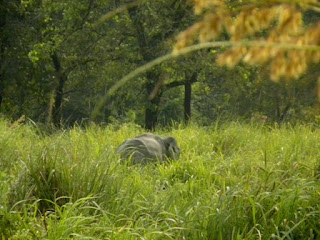Travel notes for the interested traveler on places to see in Kolkata and its neighbourhood, out-of-the-way places and experiences elsewhere in India, glimpses of wildlife, folk art, tribal life and culture in India
About Me

- tollysnomad
- With more than 50 years of travelling about in India, one can share a good deal of information and experience about out-of-the-way places and roads less travelled. That can make visits all the more exciting and enjoyable.
Tuesday, 30 November 2021
Manas National Park - A re-visit after 35 years
The Manas National Park in western Assam has many feathers to its cap. It was among the "first batch" of Tiger Reserves in India way back in 1973.It is one of the very few wilderness areas in India that has been recognized as a UNESCO World Heritage Site, together with Kaziranga National Park (also in Assam) and the Bharatpur (or Keoladeo) Bird Sanctuary near Agra. Manas is also home to the endemic Golden Langur, the Bengal Florican and the Pigmy Hog, besides many other wild animals like the one-horn Indian rhinoceros, wild buffalo, tiger, gaur, elephant and many other species.
The Manas River (or the Beki, as it is called in the lower reaches - shown above) and the rugged hills of Bhutan to the north define the National Park to a signicant extent. Thus Manas offers a variety of wildlife habitats, from riverine forests, to heavy rain-fall and moist deciduous forests, besides extensive grasslands.
Over the years, Manas has witnessed ups and owns, but now the wildlife has made a good come-back. The local settlements have grown and Barpeta Road, once just way-station, is now a bustling town with fly-overs and shopping malls. A number of lodges have come up locally (where there were once only government rest houses), and a variety of facilities are on offer, including river rafting, wilderness walks and jeep safaris in the forest.
Manas National Park is conveniently accessible by train via the rail head of either New Bongaigaon or Barpeta Road, or by air from Guwahati City.
Subscribe to:
Comments (Atom)


